
A mosaic is a piece of art or image made from the assembling of small pieces of colored glass, stone, or other materials. It is often used in decorative art or as interior decoration. Most mosaics are made of small, flat, roughly square, pieces of stone or glass of different colors, known as tesserae. Some, especially floor mosaics, are made of small rounded pieces of stone, and called "pebble mosaics".

Venice Marco Polo Airport is the international airport of Venice, Italy. It is located on the mainland 4.3 nautical miles north of the city in Tessera, a Frazione of the Comune of Venice nearest to Mestre. Due to the importance of Venice as a leisure destination, it features flights to many European metropolitan areas as well as some partly seasonal long-haul routes to the United States, Canada and the Middle East. The airport handled 11,184,608 passengers in 2018, making it the fourth busiest airport in Italy. The airport is named after Marco Polo and serves as a base for Volotea and easyJet.
The Gardens of Lucullus were the setting for an ancient villa on the Pincian Hill on the edge of Rome; they were laid out by Lucius Licinius Lucullus about 60 BCE. The Villa Borghese gardens still cover 17 acres (6.9 ha) of green on the site, now in the heart of Rome, above the Spanish Steps.
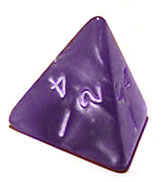
Four-sided dice, abbreviated d4, are often used in tabletop role-playing games to obtain random integers in the range 1–4. Two forms exist of this die: a tetrahedron with four equilateral triangle-shaped faces, and an elongated long die with four faces. The former type does not roll well and is thus usually thrown into the air or shaken in a box.
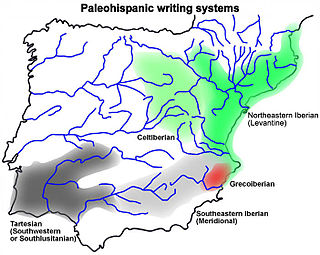
The Celtiberian script is a Paleohispanic script that was the main writing system of the Celtiberian language, an extinct Continental Celtic language, which was also occasionally written using the Latin alphabet. This script is a direct adaptation of the northeastern Iberian script, the most frequently used of the Iberian scripts.
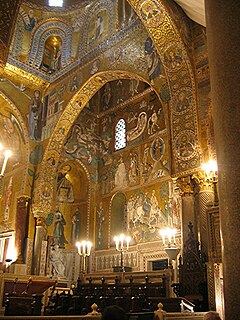
A tessera is an individual tile, usually formed in the shape of a cube, used in creating a mosaic. It is also known as an abaciscus or abaculus.
The Coelerni were an ancient Celtic tribe of Gallaecia in Hispania, part of Calaician or Gallaeci people, living in what was to become the Roman Province of Hispania Citerior, convent of Bracara Augusta, in what is now the southern part of the province of Ourense.

Opus tessellatum is the Latin name for the normal technique of Greek and Roman mosaic, made from tesserae that are larger than about 4 mm. It is distinguished from the finer opus vermiculatum which used tiny tesserae, typically cubes of 4 millimetres or less, and was produced in workshops in relatively small panels which were transported to the site glued to some temporary support. Opus tessellatum was used for larger areas and laid down at the final site. The two techniques were often combined, with small panels of opus vermiculatum called emblemata at the centre of a larger design in opus tessellatum. The tiny tesserae of opus vermiculatum allowed very fine detail, and an approach to the illusionism of painting. There was a distinct native Italian style of opus tessellatum using only black on a white background, which was no doubt cheaper than fully coloured work.
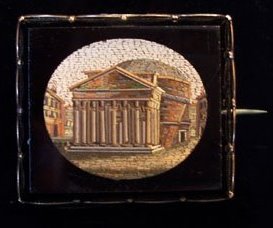
Micromosaics are a special form of mosaic that uses unusually small mosaic pieces (tesserae) of glass, or in later Italian pieces an enamel-like material, to make small figurative images. Surviving ancient Roman mosaics include some very finely worked panels using very small tesserae, especially from Pompeii, but only from Byzantine art are there mosaic icons in micromosaic with tesserae as small as the best from the Modern period. Byzantine examples, which are very rare, were religious icons. The best known shows the Twelve Great Feasts of the Greek Orthodox Church and is in the Bargello in Florence. Another is in Rome and was crucial in developing the iconography of the Man of Sorrows in the West.
Tesserae is a single-player video game developed by Nicholas Schlott based on Kent Brewster's DOS game Stained Glass and published by Inline Design in 1990 for the Macintosh. The game was also released for the Game Boy and Game Gear handhelds published by GameTek, developed by Eurocom.

A spintria is a small bronze or brass Roman token, possibly for use in brothels, although none of the literature on the spintriae contains any evidence to support this assertion. The tokens usually depict on the obverse a motif of sexual acts or symbols and a numeral in the range I - XVI on the reverse.
Xperi Corporation is a San Jose, California-based firm that licenses technology and intellectual property in areas such as mobile computing, communications, memory and data storage, and 3-D Integrated Circuit (“3DIC”) technologies, among others. Markets include semiconductor packaging and interconnect solutions, mobile, computational imaging, audio and automotive. Tessera, a subsidiary of Xperi, has licensed its chip packaging technology to numerous semiconductor manufacturers, including Intel and Samsung Electronics.

A Roman mosaic is a mosaic made during the Roman period, throughout the Roman Republic and later Empire. Mosaics were used in a variety of private and public buildings. They were highly influenced by earlier and contemporary Hellenistic Greek mosaics, and often included famous figures from history and mythology, such as Alexander the Great in the Alexander Mosaic. A large proportion of surviving examples come from Italian sites such as Pompeii and Herculaneum, as well as other areas of the Roman Empire.

A tessera was the ancient Roman equivalent of a theater ticket. Stamped into a clay shard was an entrance aisle and row number for spectators attending an event at an amphitheater or arena. Above the doors of the Colosseum in Rome are numbers corresponding to those stamped into a spectator's tessera. Tesserae frumentariae and nummariae were tokens given at certain times by the Roman magistrates to citizens, in exchange for which they received a fixed amount of wheat or money.
Favaro Veneto is an urban part of the comune (city) of Venice, in the Province of Venice, Veneto, northeastern Italy.
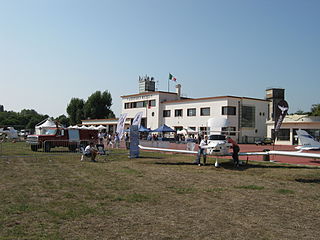
Venice-Lido Airport is an aerodrome located 1.9 nautical miles east of Venice (Venezia), a city in the Veneto region in Italy. It is situated on the north end of the island of Lido di Venezia. It is also known as Giovanni Nicelli Airport and was formerly known as Venice-San Nicolò Airport.
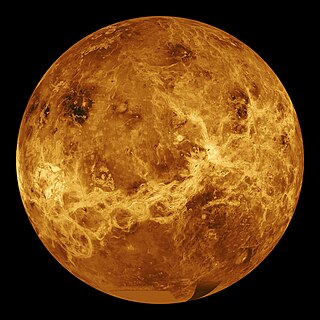
NASA's Magellan spacecraft mission discovered that Venus has a geologically young surface with a relatively uniform age of 500±200 Ma. The age of Venus was revealed by the observation of over 900 impact craters on the surface of the planet. These impact craters are nearly uniformly distributed over the surface of Venus and less than 10% have been modified by plains of volcanism or deformation. These observations indicate that a catastrophic resurfacing event took place on Venus around 500 Ma, and was followed by a dramatic decline in resurfacing rate. The radar images from the Magellan missions revealed that the terrestrial style of plate tectonics is not active on Venus and the surface appears to be immobile at the present time. Despite these surface observations, there are numerous surface features that indicate an actively convecting interior. The Soviet Venera landings revealed that the surface of Venus is essentially basaltic in composition based on geochemical measurements and morphology of volcanic flows. The surface of Venus is dominated by patterns of basaltic volcanism, and by compressional and extensional tectonic deformation, such as the highly deformed tesserae terrain and the pancake like volcano-tectonic features known as coronae. The planet's surface can be broadly characterized by its low lying plains, which cover about 80% of the surface, 'continental' plateaus and volcanic swells. There is also an abundance of small and large shield volcanoes distributed over the planet's surface. Based on its surface features, it appears that Venus is tectonically and convectively alive but has a lithosphere that is static.

Tesserae are regions of heavily deformed terrain on Venus, characterized by two or more intersecting tectonic elements, high topography, and subsequent high radar backscatter. Tesserae often represent the oldest material at any given location and are among the most tectonically deformed terrains on Venus's surface. Diverse types of tessera terrain exist. It is not currently clear if this is due to a variety in the interactions of Venus's mantle with regional crustal or lithospheric stresses, or if these diverse terrains represent different locations in the timeline of crustal plateau formation and fall. Multiple models of tessera formation exist and further extensive studies of Venus's surface are necessary to fully understand this complex terrain.

DAVINCI was a proposed mission concept for an atmospheric probe to Venus, losing out to Psyche and Lucy in the 2015 round of proposals for NASA's Discovery Program.
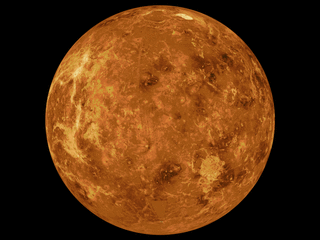
The mapping of Venus refers to the process and results of human description of the geological features of the planet Venus. It involves surface radar images of Venus, construction of geological maps, and the identification of stratigraphic units, volumes of rock with a similar age.
















